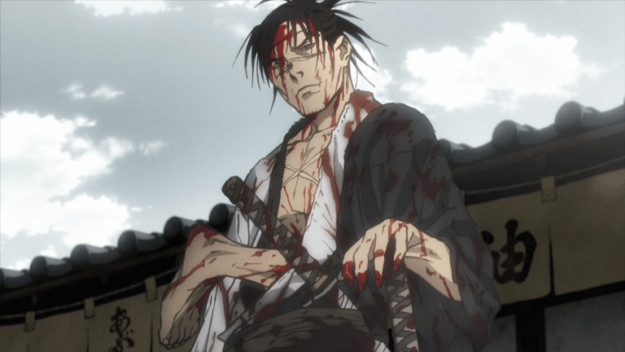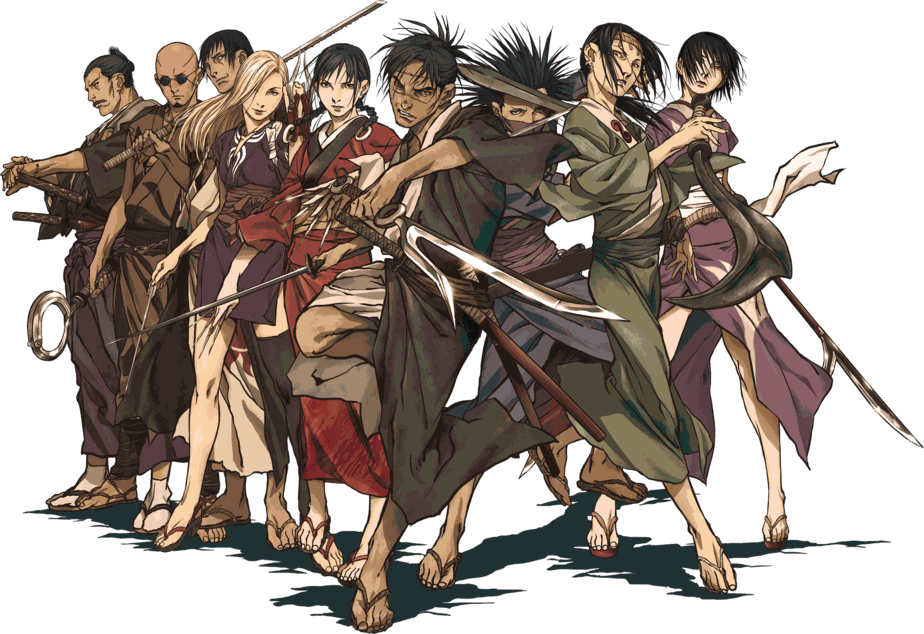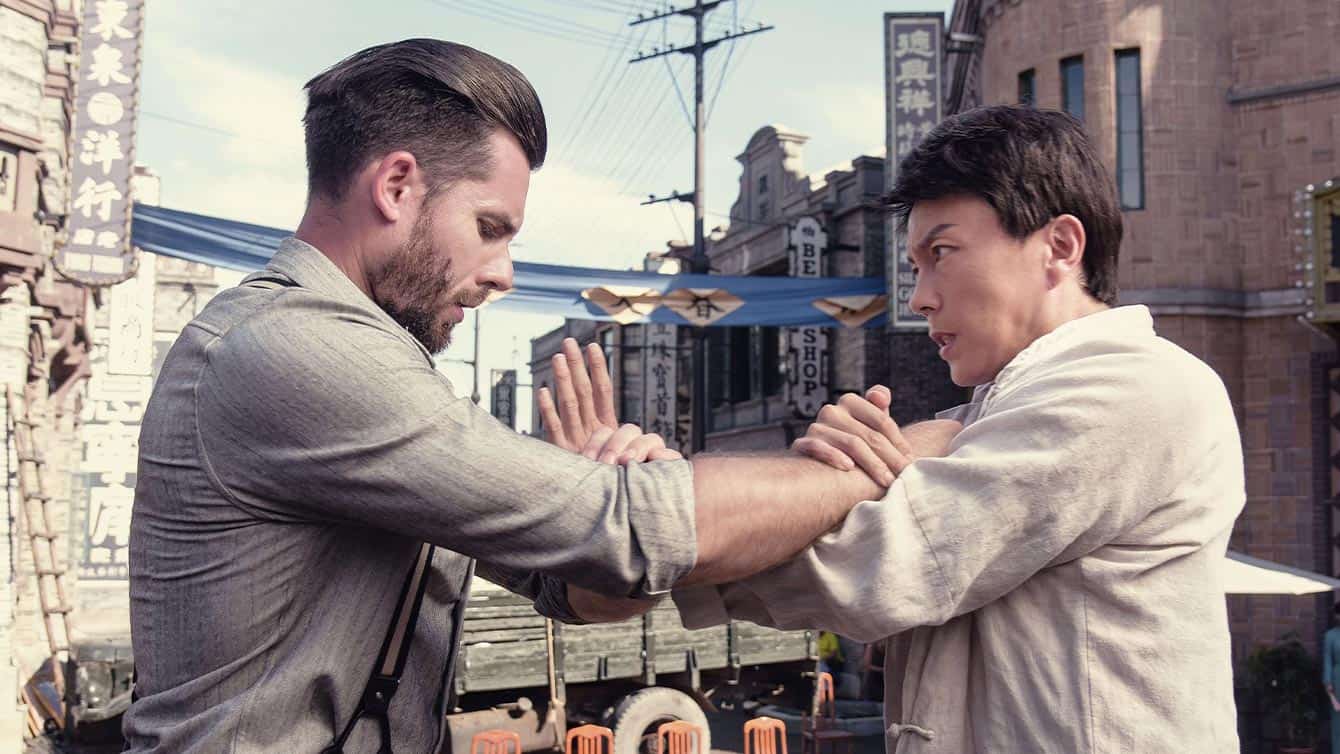In case you have not heard about one of the most famous manga of all time, Hiroaki Samura's “Blade of the Immortal” follows Manji, a skilled and relentless samurai who has a decisive advantage against any opponent that comes his way: no wound can kill him, except for a rare poison. In the past, his criminal actions led to the death of 100 other samurai (including his sister's husband). He becomes immortal at the hand of an 800-year-old nun named Yaobikuni, and is compelled by the death of his sister to accept the quest that will end his agelessness. He has vowed to make amends by killing 1000 evil men, and until he does, he will be kept alive by “sacred bloodworms” remarkable creatures that allow him to survive nearly any injury and reattach severed limbs even after hours of separation.
Watch This Title

His story has already been adapted into a movie by Takashi Miike and an interesting but largely unremarkable anime series back in 2008. This time, the original material has found a worthy anime adaptation in the hands of Liden Films and Amazon, since the brutality and damned characters that form its most interesting parts have been transferred in all their glory.
As the story begins, we meet Rin, a girl whose entire family and the members of the dojo they ran were slaughtered by a group known as Itto-ryu, whose stated goal was to prove the uselessness of Japanese swordsmen. After her father was killed and her mother raped before her eyes, young Rin swore revenge, and that is a goal she has spent two years training to carry out. As she realizes her inability however, she stumbles upon Yaobikuni in a graveyard, who suggests to her to look for Manji, a legendary killer who can help her purpose. Rin finds him, and eventually, after many tribulations, he agrees to help her, particularly because she reminds him of his little sister, although their relationship soon takes a rather different path. Thus, an odyssey of slaughter and mayhem begins.
Hiroshi Hamasaki begins the series in the “villain of the week” style, with each episode having Manji facing an opponent, and using his undying nature to overcome him or her, a tendency that lasts for 7 episodes. These first episodes help in introducing Manji and Rin and the reasons for their eventual bond, but the true story begins after that, when Kagehisa Anotsu, the leader of the Itto-ryu is introduced, along with a number of key and recurring peripheral characters that include Taito, Makie, Hyakurin, Giichi, Shira and a bit later, Habaki Kagimura. As we are introduced to thieves, merciless murderers, prostitutes and men with specific missions, we come to realize that there is also a third group of people acting, who, in fact oppose the Itto-ryu and have similar abilities. This aspect adds even more depth to the narrative and heightens significantly the complexity and thus the interest in the story.

In that fashion, there are four interconnecting elements that can be considered key, and in essence, the most unique aspects of the story. The first one is that Manji, despite his evident power, is actually no match for a number of opponents in the story, to the point that he gets cut down at least once, almost in every fight. The fact that the only reason he manages to overcome his enemies is his immortality, becomes a rather dramatic point, particularly due the pain of death he suffers during and after each battle. This aspect finds its apogee in an arc where he is captured and experimented upon, in a number of episodes that are probably the most tedious of the whole series on one hand, but add much to the dramatic essence of the anime on the other.
The second element, which actually derives and intensifies the aforementioned one, is that almost all the characters present, may be ruthless, cold-blooded killers, but are also truly damned, having suffered significantly both in the past and as the story unfolds. In that fashion, no one can say who the villains and who the good guys are after a point, since all characters are pitiable and despicable at the same time, in a style that reminded me much of Greek tragedies, particularly due to the rather impactful catharsis that takes place in the end.
The third aspect, that intensifies the other two, is that Hamasaki has focused much on presenting the back-stories of a number of peripheral characters, thus adding much to the depth of the story, and heightening the drama through the fate a number of them meets.
Lastly, the many plot twists and the gradual revelation of what is going on along with the many switches of allegiance retain the interest for the whole of the series, and complete a rather impressive narrative.

These aspects can also be perceived as a comment about the era of samurais, which, once more, is presented as brutal and relentless as it truly was (at least regarding the general setting, not the particular story that obviously is pure fiction), in another title that deconstructs the previously permeating concept of samurai nobility, while making a direct accusation on the practices of the Shogunate.
Apart from context though, the title also thrives due to its action scenes, in an aspect that benefits the most by the many and highly individualistic characters, most of which implement rather unique techniques, and the excellent animation by Liden films, which finds its apogee in the plethora of fighting sequences. The drawing of the characters is a bit flat occasionally, and the fact is that, after a point, the female characters in particular are somewhat difficult to discern, particularly when they change, or do not wear clothes. This however, is somewhat justified considering the number of characters appearing in the 24 episodes, while the many men and the key women are quite distinguishable most of the time. Lastly, Kenjiro Tsuda voice-acting of Manji is impressive, with the low-key, highly uninterested tone that characterizes his voice being more than fitting.
The violence revolving around sex is toned down in the anime (it could not be otherwise) but “Blade of the Immortal” still remains filled with gore and brutality, sensualism and perverse sexual actions (including rape), although Hamasaki manages to imply the latter for the most part, rather than actually showing it. This approach does not derive much from the exploitation aesthetics of the title, which remains one of the most brutally impressive series we have seen during the later years.
“Blade of the Immortal” is an anime of very few faults, one of the best titles of the recent years and one that truly continues the legacy of anime like “Ninja Scroll” and “Basilisk”.















